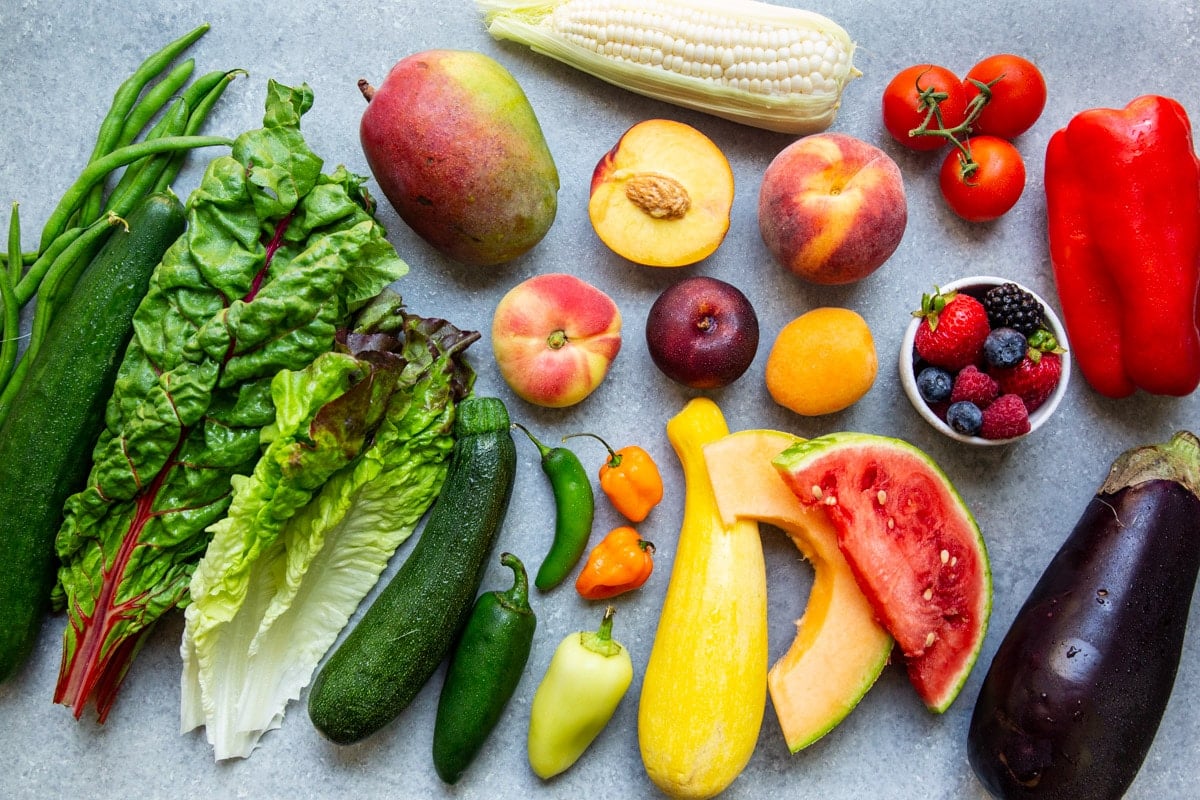In a world of constantly rising costs and shrinking budgets, one simple solution for saving money on groceries might just be growing right in your own backyard – or at least at your local farmer’s market. Using seasonal produce can not only help you pinch pennies, but it can also inspire new culinary creations and keep your meals fresh and exciting. So, dive into the world of seasonal eating and enjoy the benefits of delicious and budget-friendly meals.

Utilizing Seasonal Produce for Cost-Effective Meal Planning
When it comes to meal planning on a budget, utilizing seasonal produce can be a game-changer. Not only is seasonal produce typically fresher and tastier, but it is also usually more affordable than out-of-season options. By incorporating fruits and vegetables that are in season, you can save money while still enjoying delicious and nutritious meals.
One way to make the most of seasonal produce is to plan your meals around what is currently in season. This can help you take advantage of lower prices and ensure that you are getting the best quality ingredients. Creating a weekly meal plan based on seasonal produce can also help you save time and reduce waste, as you will be more likely to use up all the ingredients you buy.
Additionally, buying in-season produce can also support local farmers and reduce your carbon footprint. By purchasing fruits and vegetables that are grown locally and in season, you can help reduce the environmental impact of transporting produce long distances. It’s a win-win situation for your wallet and the planet.
Maximizing Savings by Incorporating Fresh, Seasonal Ingredients
One of the best ways to save money on your grocery bill is by utilizing fresh, seasonal ingredients in your cooking. Not only are these ingredients typically more affordable, but they also tend to be at their peak in terms of flavor and nutritional value. By incorporating seasonal produce into your meals, you can enjoy a variety of delicious and healthy dishes while sticking to your budget.
When shopping for fresh, seasonal ingredients, be sure to visit your local farmers’ market or grocery store to find the best deals. Look for fruits and vegetables that are in season, as they will be more abundant and therefore less expensive. Additionally, consider buying in bulk and freezing or preserving any excess produce for later use. This way, you can enjoy the flavors of the season all year round.
By making a conscious effort to cook with seasonal ingredients, you not only save money but also support local farmers and reduce your carbon footprint. Plus, the variety of flavors and textures that fresh, seasonal produce offers can inspire you to get creative in the kitchen and try out new recipes. So, next time you’re planning your meals, consider using seasonal produce to maximize your savings and elevate your cooking. Your wallet and your taste buds will thank you!
Exploring Budget-Friendly Recipes Featuring Seasonal Produce
When it comes to cooking on a budget, seasonal produce is your best friend. Not only is it typically more affordable, but it’s also at its peak freshness and flavor. By incorporating seasonal fruits and vegetables into your meals, you can save money while still enjoying delicious and nutritious dishes.
One great way to use seasonal produce is to plan your meals around what’s currently in season. For example, in the summer months, you can take advantage of juicy tomatoes, sweet corn, and fresh herbs. In the fall, apples, squash, and Brussels sprouts are abundant. By focusing on what’s in season, you can get the best prices and flavors.
Another budget-friendly tip is to buy produce in bulk when it’s in season and freeze or preserve it for later use. This way, you can enjoy your favorite fruits and vegetables even when they’re out of season, without breaking the bank. Plus, freezing or preserving produce is a great way to reduce food waste.
- Plan meals around seasonal produce.
- Buy in bulk and freeze or preserve for later.
- Get creative with recipes using seasonal ingredients.
Tips for Sourcing and Storing Seasonal Fruits and Vegetables
Sourcing Seasonal Fruits and Vegetables
When it comes to saving money and enjoying the freshest produce, sourcing seasonal fruits and vegetables is key. One of the best ways to do this is by shopping at your local farmer’s market. Not only will you be supporting local farmers, but you’ll also have access to a wide variety of in-season fruits and veggies.
Another great option is to join a community-supported agriculture (CSA) program. By signing up for a CSA, you’ll receive a weekly or bi-weekly box of fresh, locally grown produce. This is a convenient way to enjoy seasonal fruits and vegetables without having to spend time searching for them at the grocery store.
Storing Seasonal Fruits and Vegetables
Proper storage is essential for maximizing the lifespan of your seasonal produce. To keep fruits and vegetables fresh for longer, follow these tips:
- Store fruits and vegetables separately: Fruits produce ethylene gas, which can cause vegetables to spoil faster. Keep them in separate compartments in your refrigerator or pantry.
- Keep produce dry: Moisture can cause fruits and vegetables to rot. Make sure to dry off any excess moisture before storing them.
- Use breathable containers: Opt for containers that allow air circulation, such as perforated plastic bags or produce storage bags.
As we wrap up our discussion on using seasonal produce to save money, remember that eating with the seasons not only benefits your wallet, but also supports local farmers and promotes sustainability. So next time you’re planning your grocery list, consider opting for fruits and vegetables that are in season. Your taste buds and your bank account will thank you for it. Happy cooking!








